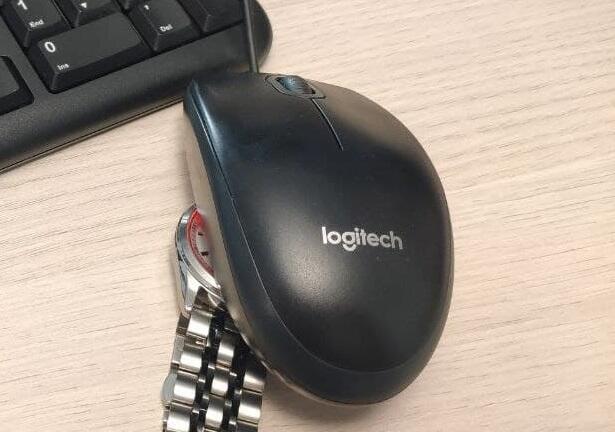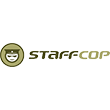31.03.2023

Please note! This article is not a user guideline and is intended for informational purposes only. Attempting to trick Employee Monitoring Software is a violation of the employment contract and may result in the termination of the said contract.
Employee monitoring tools are becoming an all-too-common occurrence. According to Gartner, even back in 2019, more than 50% of large companies were using some type of employee monitoring or time tracking software. The pandemic we experienced also caused a spike in the popularity of such solutions. For instance, a Top10VPN study revealed that the amount of "How to monitor remote employees" requests during the pandemic increased by 1700%!
All this data just goes to show that the likelihood of having monitoring software installed is rather high in today’s work environment.
Still, just as the saying goes, to every action there is an equal reaction. Most crafty employees have come up with various techniques to trick employee monitoring tools, and some of them even succeed in actually outsmarting their managers. In this article, we'll reveal some of the most popular tricks employees might turn to. As a side note, we also recommend that you check out another one of our articles on the topic of how to detect monitoring software on the work computer.
Option 1. Pressed Key
Let's kick things off with the most basic and trivial one. Virtually any employee monitoring solution assesses the apps employees work in and the effort they put into them. For example, an employee has Microsoft Word open, and the monitoring software will consider it productive activity. However, if the employee isn’t actively working in the application for more than one minute, the monitoring solution starts tracking that time as idle, i.e., period of inactivity (for Kickidler, such count begins after mere seconds). Thus, let's say the employee puts a cup on the Space key, this way, the report on them will show infinite productive activity. Meanwhile, the employee can even go for a walk in the park or do something else, entirely different from their work responsibilities.
Disadvantages of this approach:
Any tool that records video activity or even takes screenshots of employees' PC will easily detect some sort of suspicious activity. The very same Kickidler can be configured to automatically notify managers of any unusual and thus suspicious activity in the apps that are typically considered productive.
Option 2. Mouse Over a Wristwatch
Another sneaky way to fake PC activity is to put the mouse on top of the wristwatch.
The optical sensor of the mouse will react to the movement of the hands on the dial of the watch, which in turn will mimic mouse movement. That way, if an employee has a productive application open on their PC, such mouse activity will once again be registered as productive.
This can also include other mouse moving techniques, many of which can be found on YouTube, such as putting the mouse inside a faceted glass, attaching a small moving doll to the mouse, and so on. All these techniques have an identical operating principle.
Disadvantages of this approach:
Once again, reviewing screen video activity will easily determine that the employee wasn't actually working at that time. The screenshots will present the very same image of the screen at different times.
Option 3. Mouse Movers and Jigglers
Technically speaking, this approach is identical to the previous one, except that it sounds a bit more sophisticated. An employee may install dedicated Mouse Mover or Mouse Jiggler software on their PC, which will move the mouse for them and fake work activity, while the employee may very well be watching a movie or scrolling the feed.
Disadvantages of this approach:
The cons of this method are the same as with the previous one. That is, the trickery can be revealed with the help of screen video recording features. Moreover, there is always a risk that the chosen app, if it weren't created by the employee himself, is on the monitoring software's stop list. In that case, the employee can certainly expect an unpleasant conversation with HR.
Option 4. Teamwork
This is actually a very, very sneaky method that have been already covered in Kickidler blog. One employee runs TeamViewer, which the monitoring tool identifies as productive activity, connects through it to another employee's PC, runs TeamViewer on that PC, which the monitoring tool once again identifies as productive, connects through it to another employee's computer, and so it goes. This way, all employees in the chain are marked as being productive. The final employee in that chain can actually do something work-related, while all the others can be minding their own business.
Disadvantages of this approach:
Let's just say it will be much harder to catch these employees in the act compared to all the previous situations we've covered, yet it's not impossible with the help of the video recording feature.
Option 5. Screen Over Screen
This technique is also quite simple in its execution. The employee simply starts their favorite TV series on the work PC, and in the window over it, they open some work-related app, minimizing it to a size that won’t interfere with the TV show. From time to time, an employee needs to move the mouse a bit – or simply resort to option #2. Monitoring software will typically consider such activity as productive, since not every monitoring solution also tracks background processes.
Disadvantages of this approach:
Such trickery will be easily spotted on the video. Additionally, monitoring solutions such as Teramind and Kickidler also capture all background processes.
Option 6. Remote Access
Is your employee certain that their work PC is being monitored? That's fine, there's still a way for them to go around it by running remote access software on it, connecting to their home PC and then simply enjoying themselves doing whatever they want, while the monitoring tool will once again log their activity as productive.
Disadvantages of this approach:
The con of this approach is virtually the same as with all of the previous ones. This trick will be evident during the playback of the video recording of the employee's activity.
Option 7. For Advanced Users
Finally, the question that is sure to cross the minds of curious readers is, "How does one trick employee monitoring tools when virtually all of them have this video recording feature?" We’re here to inform you that it's still very much possible. However, one would have to be an advanced user to do it. Here's how it can be done:
The employee records a screencast of their workday. They then open this video on their work PC. And over this video, they open a productive application, minimizing its window to the tiniest size possible. Simultaneously, they launch an auto clicker so that it imitates mouse movements or clicks. And voila – their actions will be pretty much imperceptible! Well, almost...
Disadvantages of this approach:
Yes, it will be rather difficult to trace such trickery via the video recording feature. Only a very observant manager will be able to match the open applications tracked by the software with what's actually happening on the employee's screen or to actually spot a barely visible window of a productive app open somewhere on the screen. That being said, however, even this method is not without its flaws.
Conclusion:
The information we've shared today is for informational purposes only, and we highly discourage you employees from treating these methods as a blueprint for action. If such activity is noticed by the management, the consequences might be more severe than mere reprimand for engaging in unproductive activities during working hours in an open manner. Besides, it’s wise to keep in mind that working diligently and honestly does tend to lead to bonuses and promotions!










